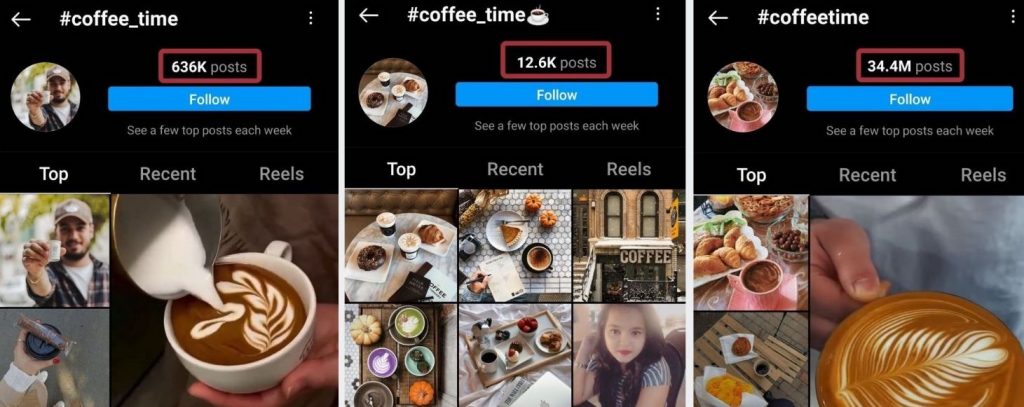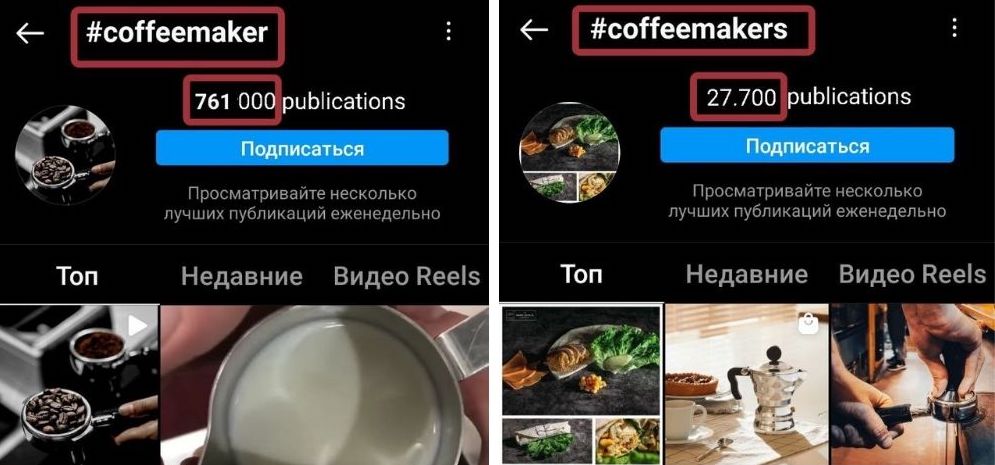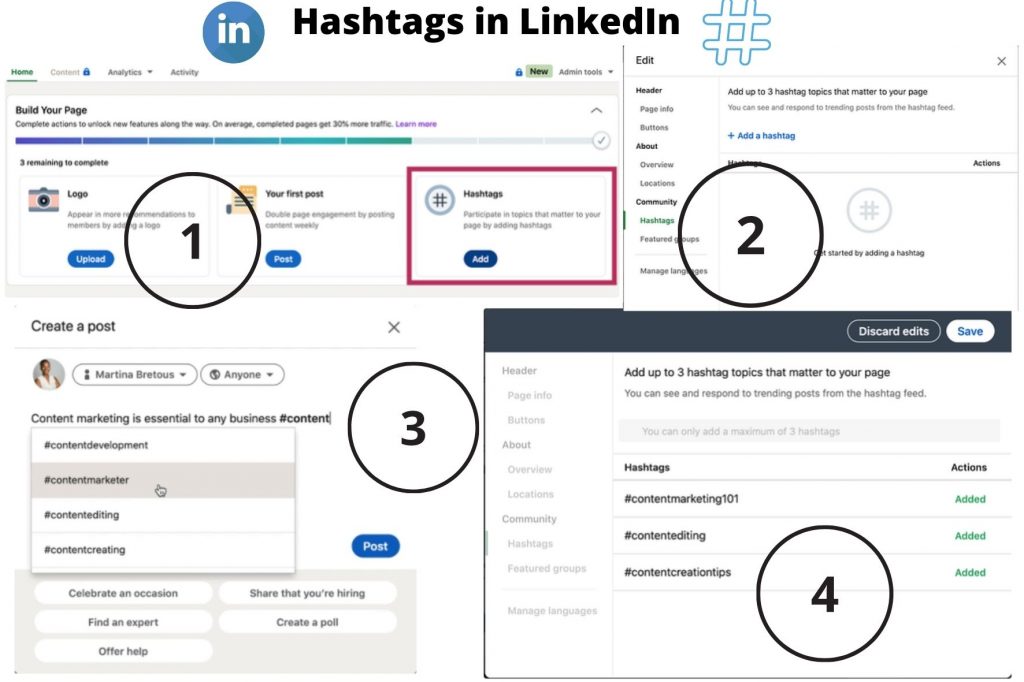
Hashtags are one of the means of promotion in social networks. According to them, algorithms classify and display content in the search, and users find information and useful accounts. So in social networks, goods, services and brands are promoted for free.
What is a hashtag?
This designation comes from the Latin hashtag: hash is a lattice, tag is a label, placed before a keyword or phrase. It is like a marker or label showing that the content is relevant to a certain topic. Collections of hundreds and thousands of posts are formed.

The words in the hashtag in Russian or English are written together, through an underscore _ or capitalized, sometimes emoji are added at the end. Each spelling is a separate label.

Materials highlighted by # in Latin are also shown for England, America and other English-speaking countries. If a company sells goods only in Ukraine, foreign visitors may not become customers, but traffic and activity on the page will increase. Designations in Cyrillic and Latin in different wordings expand the geography of impressions.

Marking # works for open accounts available for interaction by everyone. In closed publics, only followers will see posts and stories.
It's a good idea to check spelling so you don't lose your audience due to a marker error. Misspelled words are used if users type them frequently.

Types of hashtags by frequency
This characteristic is tracked in the search by the number of mentions:
- Ultra-frequency - more than 1 million, high-frequency - up to 1 million - increase the initial mass of followers and viewers of stories. Most of the reactions come from bots and commercial profiles operating through mass liking and mass following services. The chances of being in the TOP are small.
- Mid-frequency - from 10 to 100 thousand are effective for expanding the interested audience.
- Low-frequency - up to 10 thousand promote the promotion of narrowly focused products.
Use different combinations of options from these categories. At the same time, they increase activity, promote the post, look for customers or partners.
Features of # tags:
- If you rearrange the words, the result changes significantly.

- Changing only the letter gives different popularity selections.

- More than one hashtag is often applied to products or concepts. Although they have the same meaning, their frequency is different.
For example, a nutrition blogger wants to find new followers among coffee lovers. On the page, he posts a post about a drink for healthy lifestyle lovers - coffee with butter, indicates two English-language notes: medium-frequency #bulletproofcoffee and low-frequency #buttercoffee, the coverage is expanding.

Types of hashtags for Facebook, Instagram and LinkedIn
Users of different social networks enter in dialogs, posts and search similar keywords belonging to several categories. They are effective for marketing tasks and expanding the audience on any service.
Actual
These are queries related to common interests: drinks and food, locality, hobbies, action, etc. Commercial markers attract product seekers: #coffeesale, #coffeebuy, #coffeeshop, #coffeebar, #coffeemachine. Give rise to sales. Statements that convey feelings, mood, attitude, catch connoisseurs and like-minded people: #coffeetime, #coffeelover, #coffeeart, #coffeelife, #coffeebreak. Add followers, likes and reposts.

By entering the appropriate phrase in the search, we see popular and similar versions. This makes it easier to choose the # designations on each social network.

Location
The name of the area with the keyword “#coffee + city” directs residents and guests of the city to a cafe, shop, fitness center. This is how goods, service providers, tourist resorts, and educational institutions are found.

Brand
A business or product is promoted through “# + company name” in a story or message with a promo code, promotion announcement, with an attractive product photo.
The mark “#our team + company” introduces employees. They talk about themselves, share funny stories, show professional skills. It inspires confidence and attracts visitors to a private farm, fashion design studio, cafe or entertainment center.

The brand hashtag is distributed through promotions. In the conditions, they ask you to enter a unique mark when reposting an image to a story. It helps the company to create a positive reputation, track mentions, and engage in dialogue with potential customers.
Profession hashtags
Customers find artists and photographers through thematic publics that recommend professionals according to # marks. Specialists themselves add similar hashtags with the name of the profession and location to their posts.

Events
When reporting a scheduled event, use “#+ name of the meeting” and the host organization. There are few reports of local events on a small scale. Their task is to tell the participants and those interested about the start date and course of the event.

Navigation
Through “# + Topic”, bloggers bring together stories about their training, personal or professional anecdotes, and companies - information about products or services and invite you to view collections on the topic. Sometimes they generate interest by adding questions covered in related posts.
Features of hashtags for Facebook, Instagram and LinkedIn
# phrases are checked for “safety”. The system punishes with sanctions for prohibited calls that may offend the audience or induce to violate the law, the rights of others. Labels with a bad reputation are not recommended. They are accompanied by the following message:

Although the rules for using hashtags in social networks are similar, there are features of their work in each system. Given them, it will be possible to expand the reach and arouse the interest of users.
A Socialbakers study found that too many hashtags reduce audience engagement. One sign of # gives a positive result. If there are more than two of them in Facebook posts, user interaction with the content is reduced.

Labels that solve specific problems are recommended: they inform about an event, promote a product or brand, reflect the interests of users. Hashtags for Facebook are selected in the same way as keywords for SEO:
- They use query generation services and evaluate their popularity in the search.
- They track common tags in their niche and check the number of mentions.
- Determine the scope of their publications with different # designations on the same topic and leave those with the most views.
On Facebook, 3-5 hashtags are enough. They are placed in the text or at the end of the post. The task is to interest, offer to learn more, get additional facts.
# markers within groups help you quickly find information. You can put the caption “Navigation” on the image, place tags with topics and pin the message. It will become the "table of contents" of the public and increase the depth of viewing, the time spent by guests on the page and lead them to the information of interest.
The Facebook Audience Insights tool helps you get to know your target audience better to find the right # labels. The statistics give a classification according to the degree of involvement, coverage and type of publications.
This social network allows you to place no more than 30 hashtags under the post and up to 10 in stories. According to statistics from Hubspot 2020, the average number of phrases with # under posts is about 11. It is recommended to use no more than 5 tags.
Where is it better to put the hashtag: after the body text or in the comments? Socialinsider and Quuu conducted a study of 649,895 publications and came to the following conclusions:
- 87.7 % tags are in the photo captions, not in the first comment.
- Posts with 27-30 hashtags do not increase audience engagement.
- Profiles up to 100 thousand subscribers get more coverage if hashtags at the end of the text, where from 100 thousand followers, they give the best result in the comments.
User engagement is affected by the relevance of the hash marks, their placement, and the number of profile followers. Reader engagement analytics helps you determine which keywords and where to place them are most effective.
There are significantly fewer posts on this social network than on Facebook or Instagram, so the strategy for using hashtags is different:
- When you sign up for a business account, LinkedIn provides a list of recommended keywords for your profile. You can add up to three or add your own. They do not become interactive and are not highlighted in blue.
- Hashtags are added to messages anywhere when videos, photos are shared. You can enter your own passphrase. Lattice is used in comments and articles, but it does not appear in hashtag feeds.
- Marks # to the article are made in a special comment. When you click "Publish", a pop-up window appears where one of the items asks you to report the content. In the field put hashtags corresponding to the subject of the text. On LinkedIn, you can't change them in published articles. In the text itself, labels are not active.
- It is recommended to use no more than 3 hashtags, as Pete Davis, former director of product management at LinkedIn, said in an article on the company's website.

Hashtags optimize search and spread information among the target audience and it is important to use them correctly. However, the maximum growth in traffic and activity on the page is obtained with a constant professional promotion and advertising in social networks. It is shown to a much larger number of users who are interested in the topics of the public or business profile. Combining all means of promotion, they achieve a stable growth in the involvement of followers and expansion of coverage.







